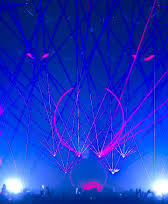The Evolution of Dubstep Music
Dubstep is a genre of electronic dance music that originated in South London in the late 1990s. It is characterized by syncopated rhythms, deep basslines, and sparse vocal samples. Over the years, dubstep has evolved and diversified, influencing various other genres and becoming a global phenomenon.
The early roots of dubstep can be traced back to genres like garage and dub reggae. Artists like Skream, Benga, and Digital Mystikz are credited with pioneering the sound by incorporating elements of dub reggae with UK garage beats to create a dark and bass-heavy sound.
By the early 2000s, dubstep had gained popularity in underground music scenes in London and eventually spread to other parts of the world. The genre’s distinctive wobble basslines and half-time beats became iconic features that set it apart from other electronic music genres.
As dubstep continued to evolve, artists began experimenting with different styles and influences, leading to subgenres like brostep (characterized by aggressive sounds and heavy drops) and future garage (incorporating elements of UK garage with a futuristic twist).
Today, dubstep remains a vibrant genre with a dedicated fan base around the world. Its influence can be heard in mainstream pop music, film soundtracks, and even other electronic music genres. Despite its evolution over the years, dubstep continues to push boundaries and inspire creativity in both artists and listeners alike.
7 Essential Tips for Crafting Unique and Dynamic Dubstep Tracks
- Experiment with different bass sounds and patterns to create unique drops.
- Use automation to add movement and dynamics to your dubstep tracks.
- Layer multiple synths and samples for a fuller, more complex sound.
- Pay attention to the mixdown process to ensure clarity and balance in your mix.
- Incorporate elements from other genres like trap or drum and bass to keep your sound fresh.
- Don’t be afraid to push the boundaries of traditional song structures in dubstep production.
- Stay updated on new plugins and production techniques to continually improve your skills.
Experiment with different bass sounds and patterns to create unique drops.
To enhance your dubstep production, it is essential to experiment with various bass sounds and patterns to craft distinctive drops. By exploring different bass textures, tones, and rhythms, you can create dynamic and innovative drops that set your music apart. Whether you’re layering multiple basslines, modulating effects, or incorporating unconventional sound design techniques, embracing experimentation will help you unlock new creative possibilities and elevate the impact of your dubstep tracks.
Use automation to add movement and dynamics to your dubstep tracks.
To enhance the depth and energy of your dubstep tracks, consider utilizing automation to introduce dynamic shifts and movement. By automating parameters such as filter cutoffs, LFO rates, or effects levels, you can create evolving textures and intricate sound variations that add excitement and interest to your music. Experimenting with automation allows you to craft engaging build-ups, drops, and transitions that elevate the overall impact of your dubstep compositions.
Layer multiple synths and samples for a fuller, more complex sound.
To enhance the depth and complexity of your dubstep production, consider layering multiple synths and samples. By combining different sounds and textures, you can create a fuller and more dynamic sonic landscape that adds richness to your tracks. Experiment with blending various synths and samples to achieve a unique sound palette that elevates the overall composition, making your dubstep music more engaging and impactful for listeners.
Pay attention to the mixdown process to ensure clarity and balance in your mix.
When producing dubstep music, it is crucial to pay close attention to the mixdown process to achieve clarity and balance in your mix. A well-executed mixdown ensures that each element of the track, from the deep basslines to intricate synth patterns, is properly balanced and sits well in the overall sound landscape. By carefully adjusting levels, panning, and EQ settings during the mixdown process, you can enhance the impact of your dubstep track and create a polished final product that captivates listeners with its clarity and sonic depth.
Incorporate elements from other genres like trap or drum and bass to keep your sound fresh.
To keep your dubstep sound fresh and innovative, consider incorporating elements from other genres such as trap or drum and bass. By blending diverse influences, you can create unique sonic textures and rhythms that set your music apart. Experimenting with different genres not only adds depth to your tracks but also allows you to explore new creative possibilities and push the boundaries of traditional dubstep music. Embracing a fusion of styles can help you evolve as an artist and keep your sound dynamic and engaging for listeners.
Don’t be afraid to push the boundaries of traditional song structures in dubstep production.
In dubstep production, it is essential not to be afraid to push the boundaries of traditional song structures. Experimenting with unconventional arrangements, unexpected transitions, and unique sound combinations can lead to innovative and captivating tracks. By breaking away from the typical verse-chorus-verse format and exploring new ways to structure your music, you can create a fresh and exciting listening experience that sets your dubstep productions apart from the rest. Embrace creativity, take risks, and challenge yourself to think outside the box to truly make your mark in the world of dubstep music.
Stay updated on new plugins and production techniques to continually improve your skills.
To excel in dubstep music production, it is crucial to stay informed about the latest plugins and production techniques. By keeping up-to-date with new tools and methods, you can enhance your skills, experiment with fresh sounds, and elevate the quality of your music. Whether it’s exploring innovative plugins for unique sound design or mastering advanced production techniques for better mixing and mastering, continuous learning and adaptation are key to staying ahead in the dynamic world of dubstep music production.

